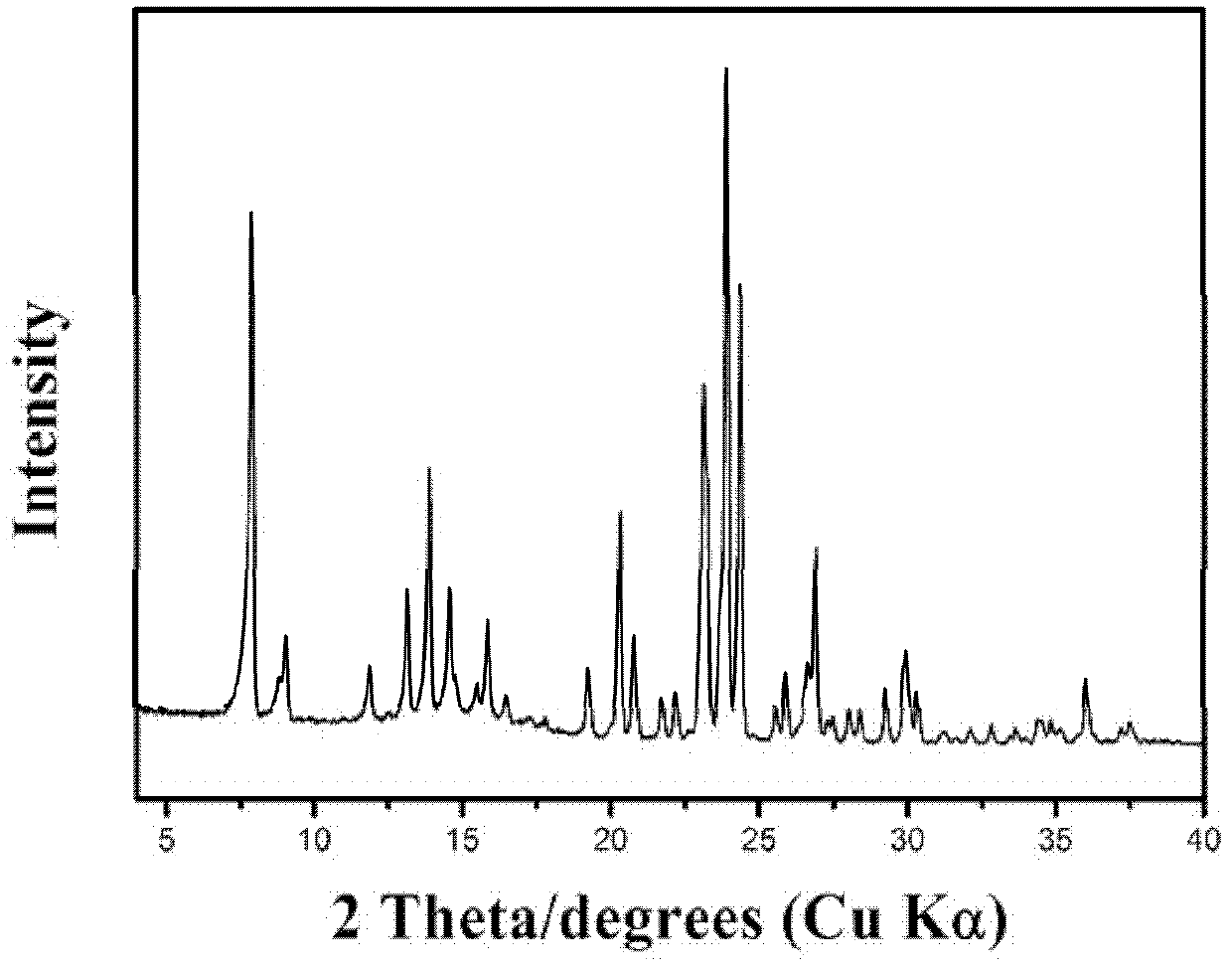Inorganic phase separation membrane and application of thereof to oil-water separation
A technology of oil-water separation and separation membrane, which is applied in the direction of liquid separation, separation method, semi-permeable membrane separation, etc., to achieve wide application prospects and excellent mechanical properties
- Summary
- Abstract
- Description
- Claims
- Application Information
AI Technical Summary
Problems solved by technology
Method used
Image
Examples
Embodiment 1
[0043] The stainless steel mesh (80 mesh) was impregnated in the dispersed silicalite-1 nanometer molecular sieve (pure silicon MFI type molecular sieve) (see Chem. Treat for 10 minutes, then dry at 180°C for 2 hours; repeat the steps of impregnation, ultrasonication, and drying for 3 times.
[0044] The treated stainless steel mesh was vertically placed in a hydrothermal reactor and immersed in the synthetic sol of silicalite-1 molecular sieve (the molar ratio was 1KOH: 1TPABr: 1000H 2 O: 4.4TEOS, hydrothermal reaction at 200° C. for 120 hours for secondary growth of molecular sieves, resulting in a silicalite-1 molecular sieve coating with a thickness of 50 microns, and a mass ratio of stainless steel mesh to silicalite-1 molecular sieve coating of 5:1.
[0045] The product is washed twice with deionized water, dried at 60°C for 24 hours, and flattened to obtain an inorganic phase separation membrane that can separate various oils and fats with high efficiency and low energy...
Embodiment 2
[0047] The stainless steel mesh (360 mesh) was immersed in the dispersed silicalite-1 nano-molecular sieve (pure silicon MFI type molecular sieve) (the nano-molecular sieve was synthesized from Chem. Mater 20, 2008, 3543-3545) aqueous solution (mass fraction 2%), Ultrasonic treatment for 10 minutes, followed by drying at 180°C for 2 hours; repeat the steps of impregnation, ultrasonication, and drying 3 times.
[0048] The treated stainless steel mesh was vertically placed in a hydrothermal reactor and immersed in the synthetic sol of silicalite-1 molecular sieve (the molar ratio was 1KOH: 1TPABr: 1000H 2 O: 4.4TEOS, hydrothermal reaction at 200° C. for 72 hours for secondary growth of molecular sieves, resulting in a silicalite-1 molecular sieve coating with a thickness of 18 microns, and a mass ratio of stainless steel mesh to silicalite-1 molecular sieve coating of 25:1.
[0049] The product is washed twice with deionized water, dried at 60°C for 24 hours, and flattened to o...
Embodiment 3
[0051] The stainless steel mesh (800 mesh) was immersed in the dispersed silicalite-1 nanometer molecular sieve (pure silicon MFI type molecular sieve) (the nanomolecular sieve was synthesized from Chem.Mater 20, 2008, 3543-3545) aqueous solution (mass fraction 2%), Ultrasonic treatment for 10 minutes, followed by drying at 180°C for 2 hours; repeat the steps of impregnation, ultrasonication, and drying 3 times.
[0052] The treated stainless steel mesh was vertically placed in a hydrothermal reactor and immersed in the synthetic sol of silicalite-1 molecular sieve (the molar ratio was 1KOH: 1TPABr: 1000H 2 O: 4.4TEOS, hydrothermal reaction at 200° C. for 12 hours for secondary growth of molecular sieves, resulting in a silicalite-1 molecular sieve coating with a thickness of 7 microns, and a mass ratio of stainless steel mesh to silicalite-1 molecular sieve coating of 100:1.
[0053] The product is washed twice with deionized water, dried at 60°C for 24 hours, and flattened t...
PUM
 Login to View More
Login to View More Abstract
Description
Claims
Application Information
 Login to View More
Login to View More - R&D
- Intellectual Property
- Life Sciences
- Materials
- Tech Scout
- Unparalleled Data Quality
- Higher Quality Content
- 60% Fewer Hallucinations
Browse by: Latest US Patents, China's latest patents, Technical Efficacy Thesaurus, Application Domain, Technology Topic, Popular Technical Reports.
© 2025 PatSnap. All rights reserved.Legal|Privacy policy|Modern Slavery Act Transparency Statement|Sitemap|About US| Contact US: help@patsnap.com



